Mammals
AUSTRALASIAN Temperate Forest
The unusual and endemic mammals of the Australian temperate forest and woodlands include famous and 'classic' marsupials such as the koala, and many types of kangaroo and wallaby...

Infraclass Marsupialia
This infraclass in made up of a ‘supercohort’ of different orders, with a diverse range of forms, from tiny marsupial moles to kangaroos that are almost as tall as a person.
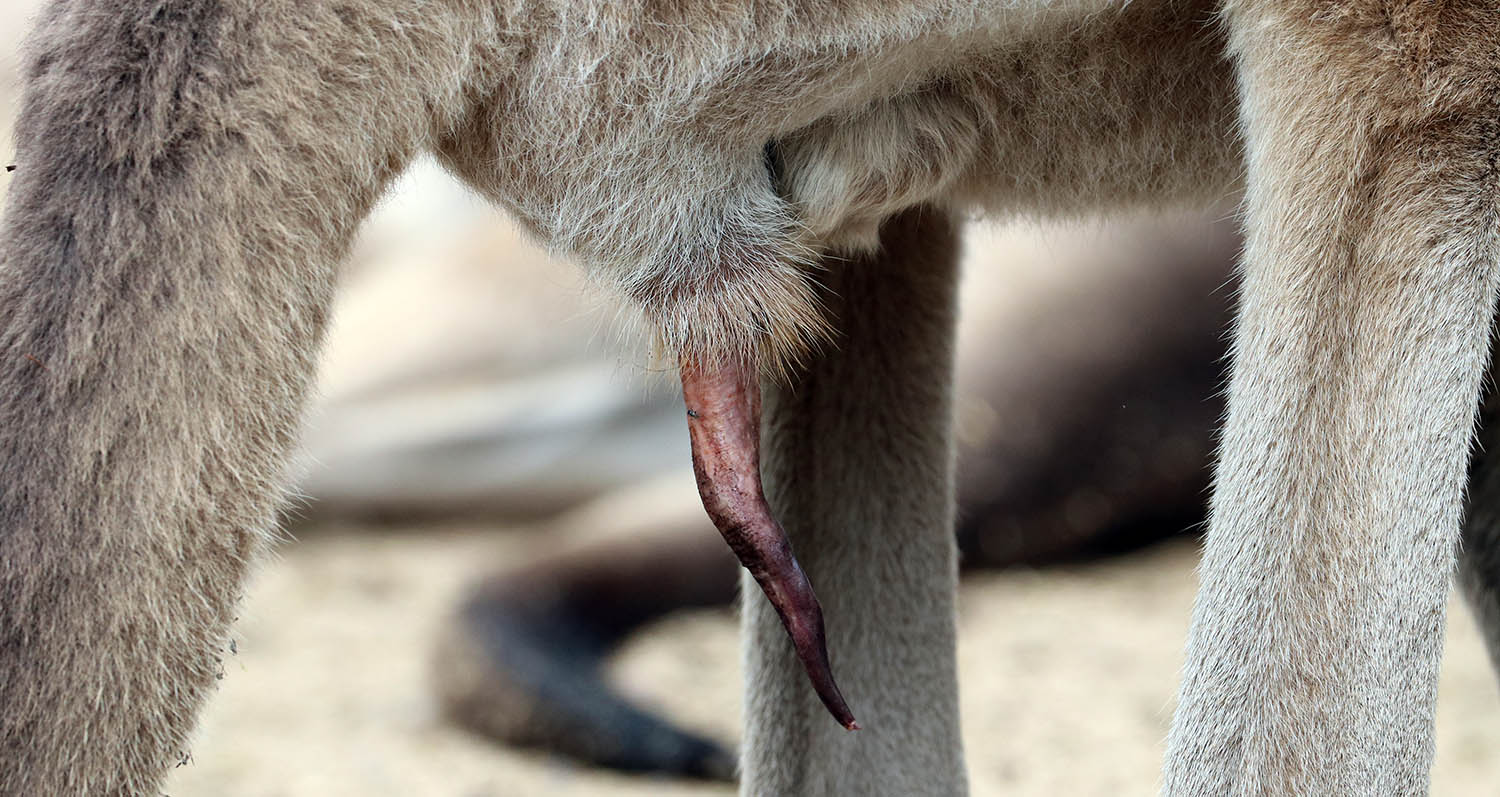 Did anyone see me taking this photo of a kangaroo penis? (John Forrest National Park, W.A.)
Did anyone see me taking this photo of a kangaroo penis? (John Forrest National Park, W.A.)In marsupials, the penis is usually located behind the testicles. This is the opposite to us eutherian (placental) mammals that have the penis in front of the testicles - (go ahead and check, I'll wait for you).
Perhaps the most distinctive and important feature of marsupials is that they essentially give birth to underdeveloped young. After the relatively tiny ‘joey’ has been born, it then completes much of it’s development outside of the womb. With only it’s sense of smell and forelimbs de- veloped, the tiny animal drags itself to attach to the teat, which swells to plug into the mouth. This teat and the baby are usually protected by a pocket of skin; the pouch. There is a wide diversity of pouches: while some species have a deep, extendable, muscle-lined pocket, others may just have a rudimentary flap of skin.
Marsupials have long inhabited the Neotropics of South and Central America, where there are almost 100 species of ‘American Opossums’ and ‘Shrew Opossums’. However, it is in the long isolated Australasian land mass where marsupials have, in the absence of other placental mammals, radiated into such a diverse range of forms. Australian marsupials have evolved equivalents to fill in niches that are occupied elsewhere by wolves (thylacines), weasels (quoll), pigs (bandicoots), moles (marsupial moles), deer (wallabies), sloths (koalas) and monkeys (possums).
Order Diprotodontia
Family Phascolarctidae: Koalas
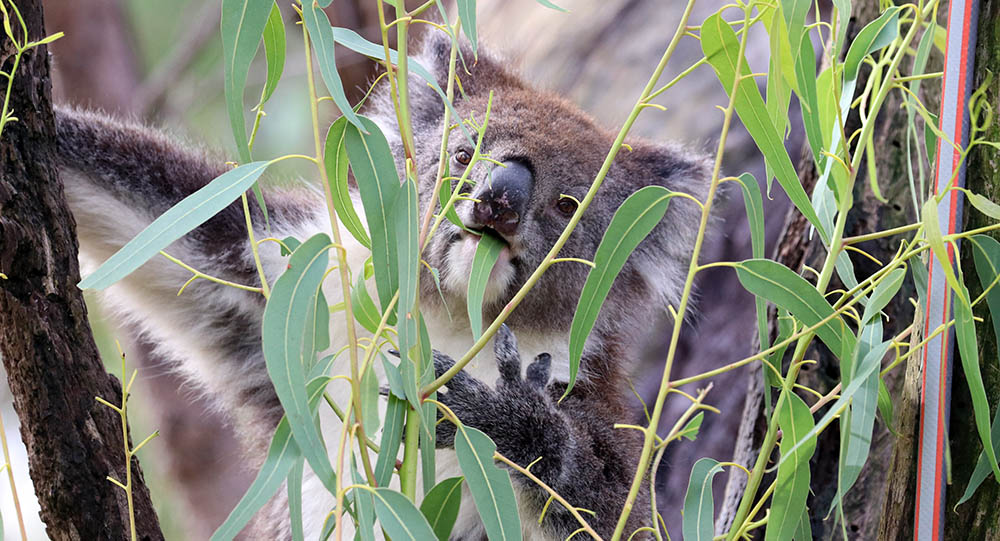
The Koala feeds mostly on the leaves of about 30 species of Eucalyptus trees.
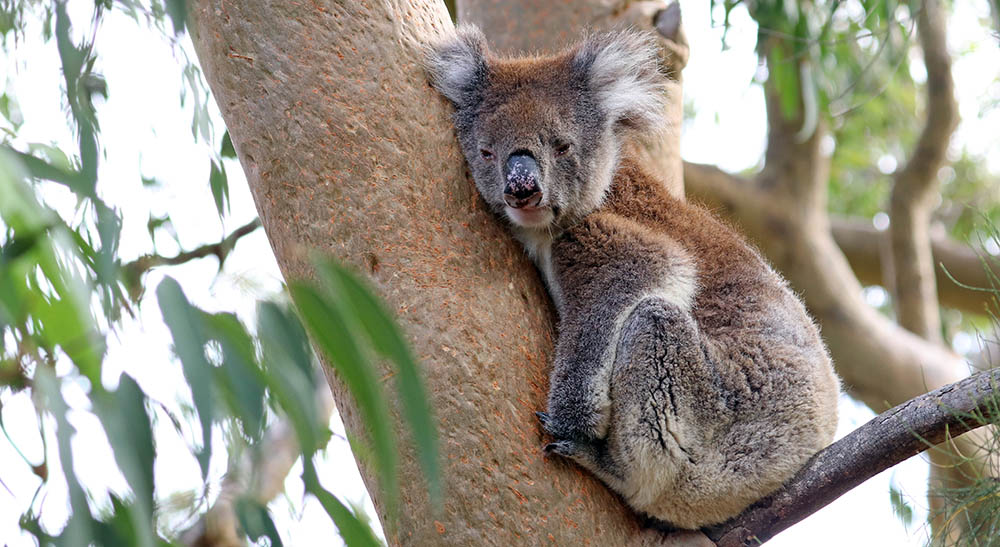
With such a low nutrient diet, Koalas spend a lot of their lives asleep; they are usually resting for 20 hours out of every day.
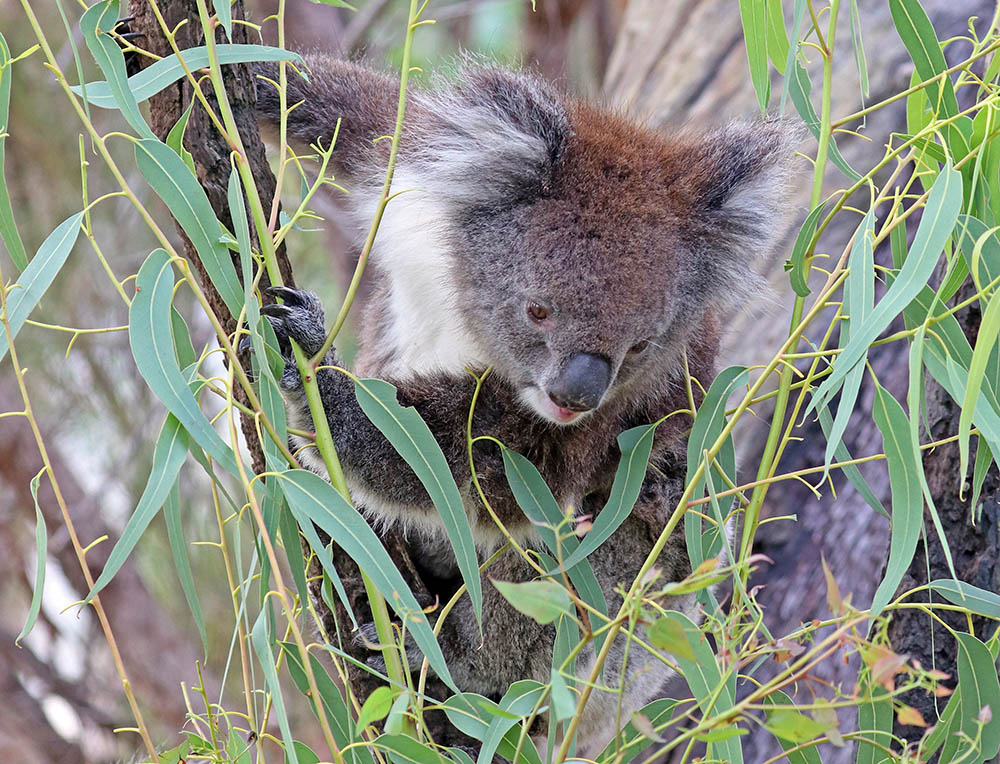
Koalas two opposable digits on their 'hands', enabling grip on branches. Another adaptation to climbing and holding onto trees are their sharp claws! So even though they look calm and cuddly, don't try to pick one up, or they will scratch you with those claws!
Family Vombatidae: 'Wombats'
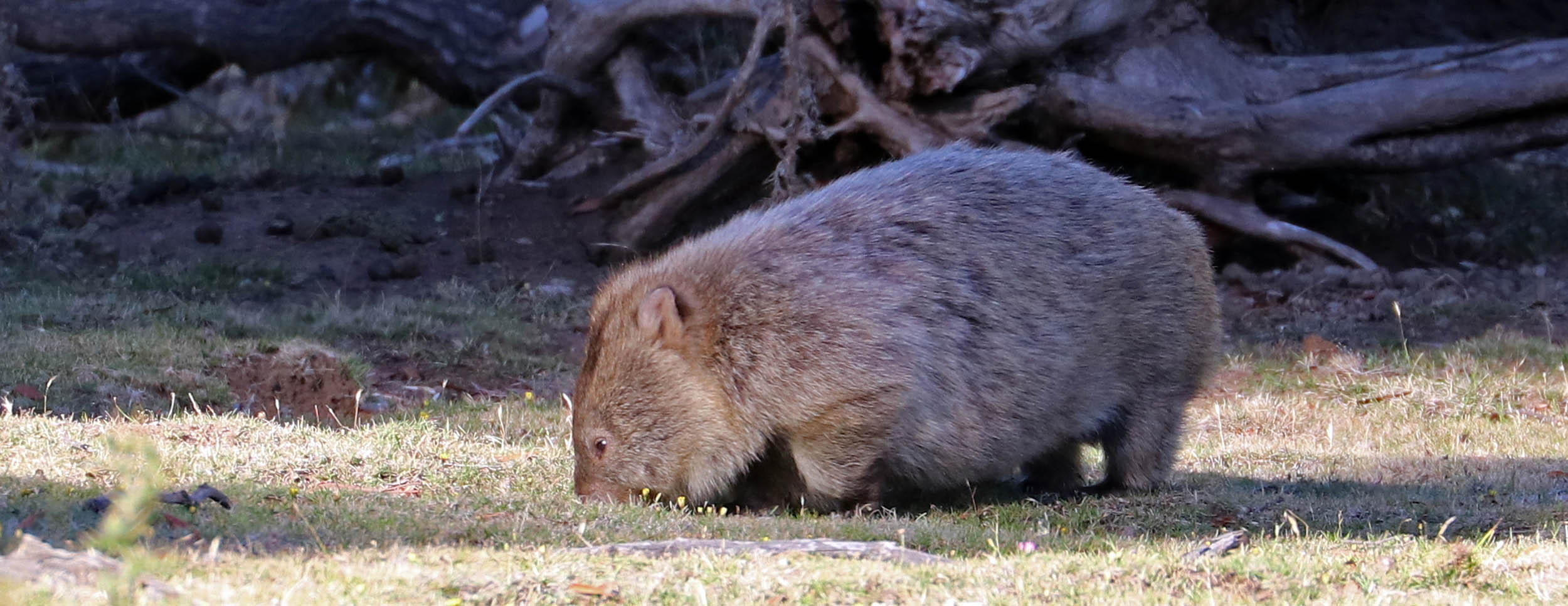 Common Wombat grazing (Maria island, Tasmania)
Common Wombat grazing (Maria island, Tasmania)This family includes three species of living wombat. They are pretty cute: a big furry lump with short legs. Wombats are the largest burrowing animals in the world. They mostly feed by grazing on grass. They are literally "hard-asses", with a re-enforced layer of cartilage under their skin across their rear end. Speaking of the back end, they have one of the most interesting and distinctive of all Australian scats: their poo is cube-shaped, and often pooped out into an obvious place. And they produce a lot of it, up to 100 poops a night. All three species of Wombat are endemic to Australia.
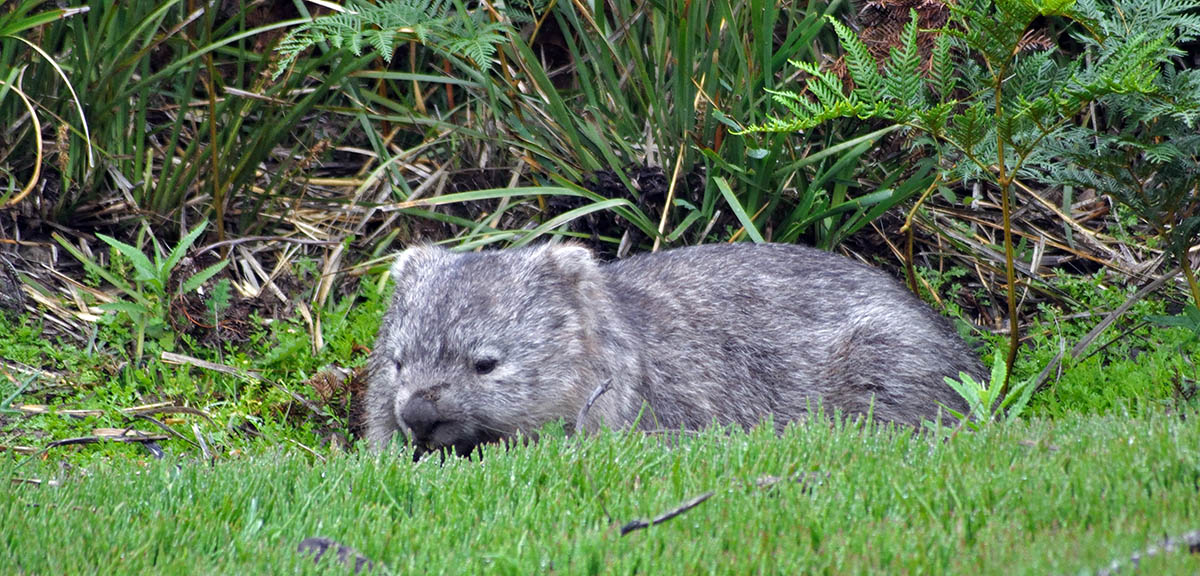 (Maria Island, Tasmania)
(Maria Island, Tasmania)Vombatus ursinus, 'Common Wombat'.
'Possums'
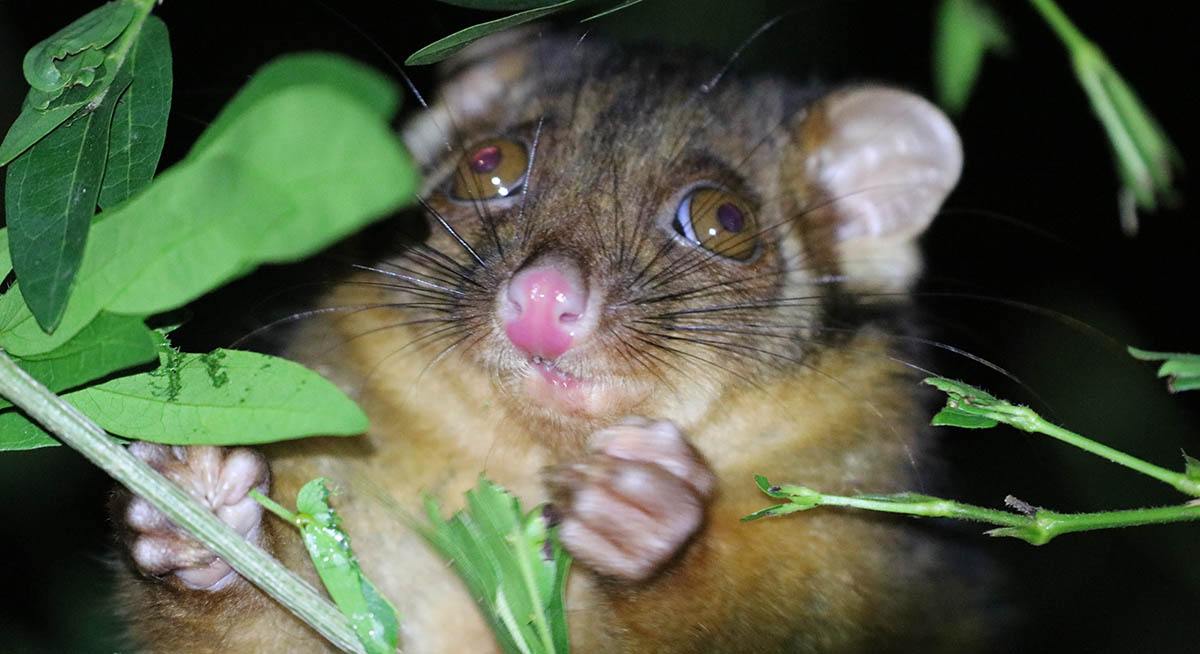
In Australia, this loose term covers various different arboreal species from different families.
Family Pseudocheiridae: 'Ringtails'
This family includes at least 15 species in a range of genera. They are found in New Guinea, Australia, and some surrounding islands, with 7 species in Australia. They are not generally quite as wide ranging in their diet as other possums, such as the gliders and brushtails. They may feed on fruits and flowers, especially around gardens, but generally the bulk of their diet is leaves. They are excellent climbers with strongly prehensile tails. They are also usually quieter than many other possums; their less reliance on vocalization in communication is reflected in their smaller ears.
 (Busselton)
(Busselton)As suggested by the name, Ringtails have a tail that is often held curled, and are usually not as fluffy as 'brushtails'.
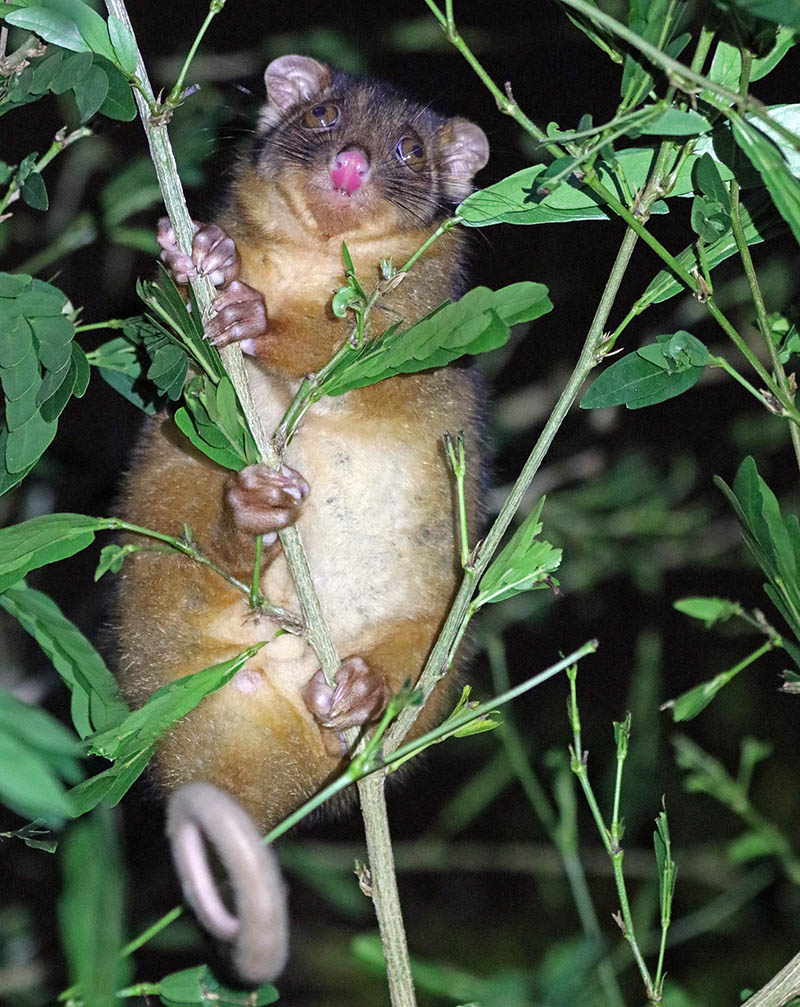 (Maroochydoore)
(Maroochydoore)Pseudocheirus peregrinus, 'Common Ringtail Possum'.
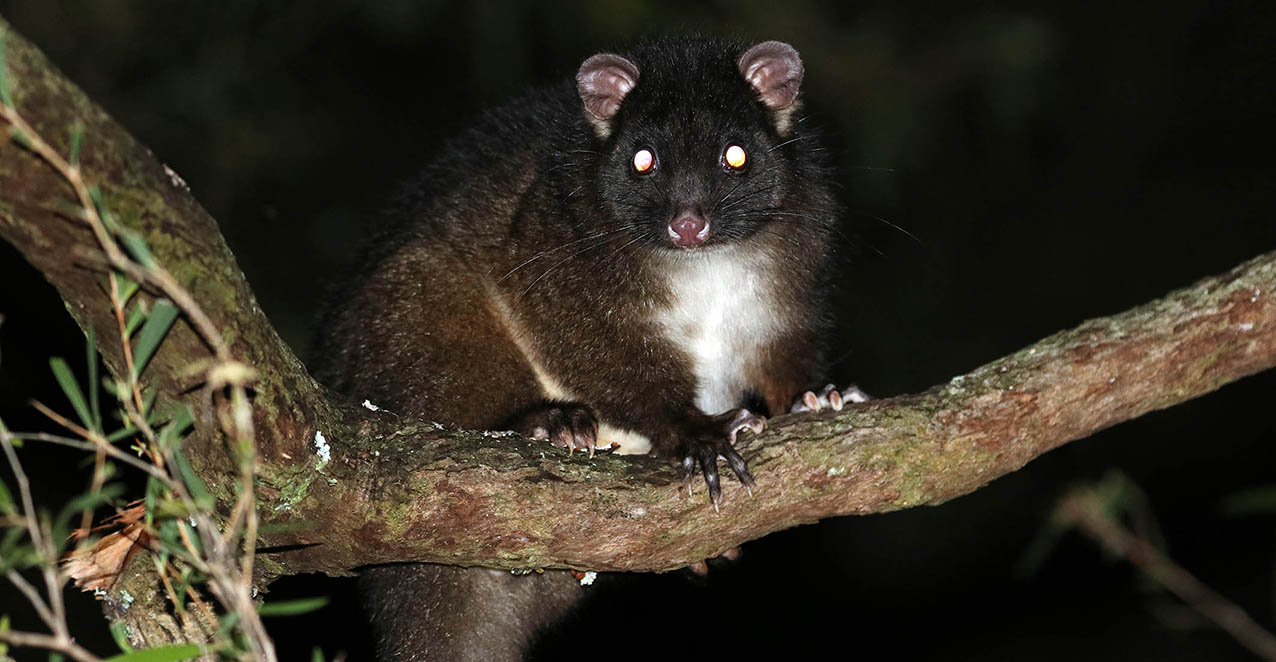 (Busselton, south-west WA)
(Busselton, south-west WA)Pseudocheirus occidentalis, 'Western Ringtail Possum'.
 (Borania Calrossie Forest reserve, Queensland)
(Borania Calrossie Forest reserve, Queensland)Petauroides volans, 'Greater Glider'. This species has now been split into 3 species. Not related to the other smaller gliders, but is in the ringatil possum family. Large fluffy possum. Often stays still in same tree for some time. They are found in Eucalyptus forest and woodlands along eastern Australia.
Family Phalangeridae: 'Brushtails'
Brushtail Possums are quite omnivorous; they’ll eat leaves, fruit, flowers and french fries. They are generally the only type of possum likely to be seen on the ground, where they may take handouts from people and scavenge around human habitations. The ‘Brushtails’ are probably the most vocal of the generally quiet marsupials, and their large fox-like ears reflect how important vocal communication is. Scent is also used, with a musky smelling substance produced from glands near the anus and on the chest; thus ‘brushies’ tend have a particular odour.
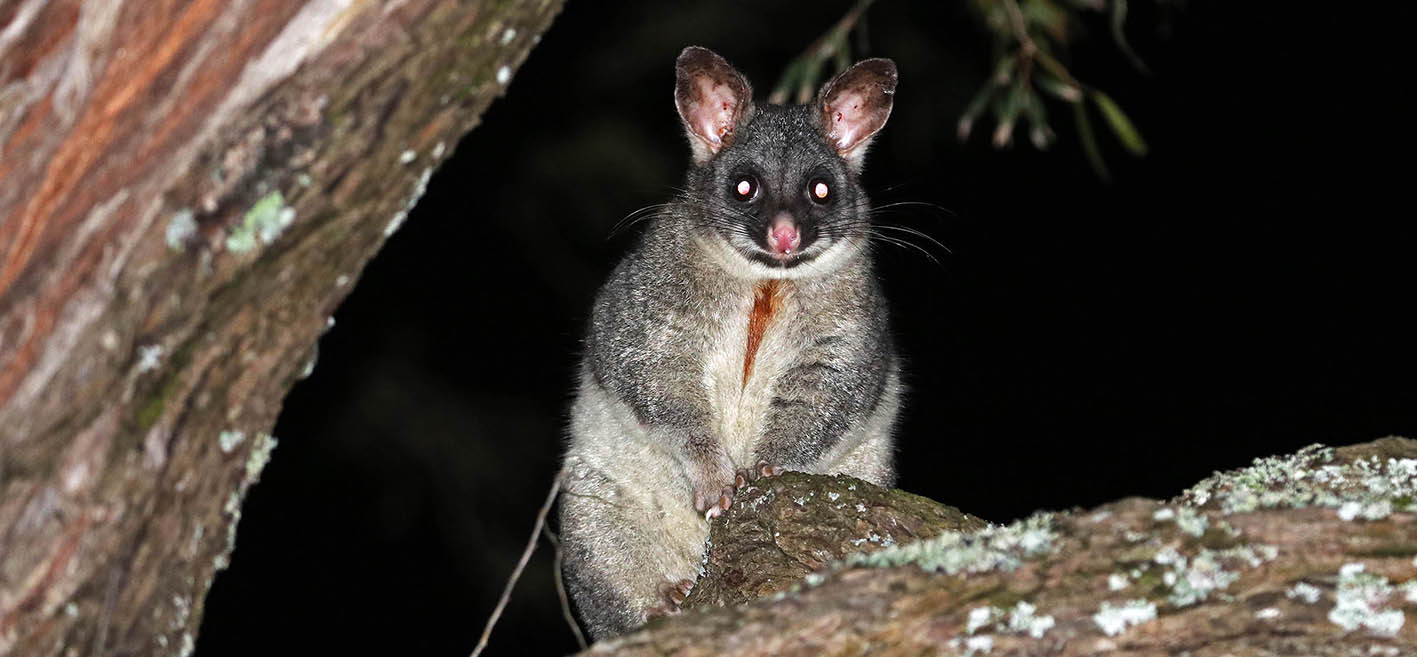 (Busselton)
(Busselton)Trichosurus vulpecula, 'Common Brushtail Possum'. Can be found, in one form or another, throughout much of Australia. Most vocal of all Australian marsupials, with growls, chattering clicks and screams (which can be surprisingly scary when one is in the bush at night alone!). The tail is prehensile; even a heavy, well-feed, fatty of an urban possum can hang upside down off a branch by just it's tail. Rather large, solidly built possum with dark furry tail. Colour of fur ranges quite a bit, from black form, to more common grey form, to a ‘coppery’ rainforest form.
Family Petauridae: 'Gliders'
Gliders are usually grey or brown in colour, with a bushy tail and a darkish stripe on the back that often extends to the forehead. They are referred to as the ‘wrist–winged gliders’, as most have a loose flap of skin between the wrist and ankle on the same side. This appears as a loose fold of skin when climbing, but when jumping from tree to tree the skin is stretched and acts as a gliding surface. They have been reported to glide up to 100 meters. Being nocturnal, their sense of small is important. In the more sociable species, they use scent trails to identify other individuals of the same species. Research indicates secretions from dominant males can suppress reproductive activity in other males in the group. Gliders use their sharp lower incisors to chew into trees and then lick the resulting sap and gum. This is especially so in winter, when their other foods such as insects and other invertebrates are rare. They also nibble and suck on fruit and flower nectar.
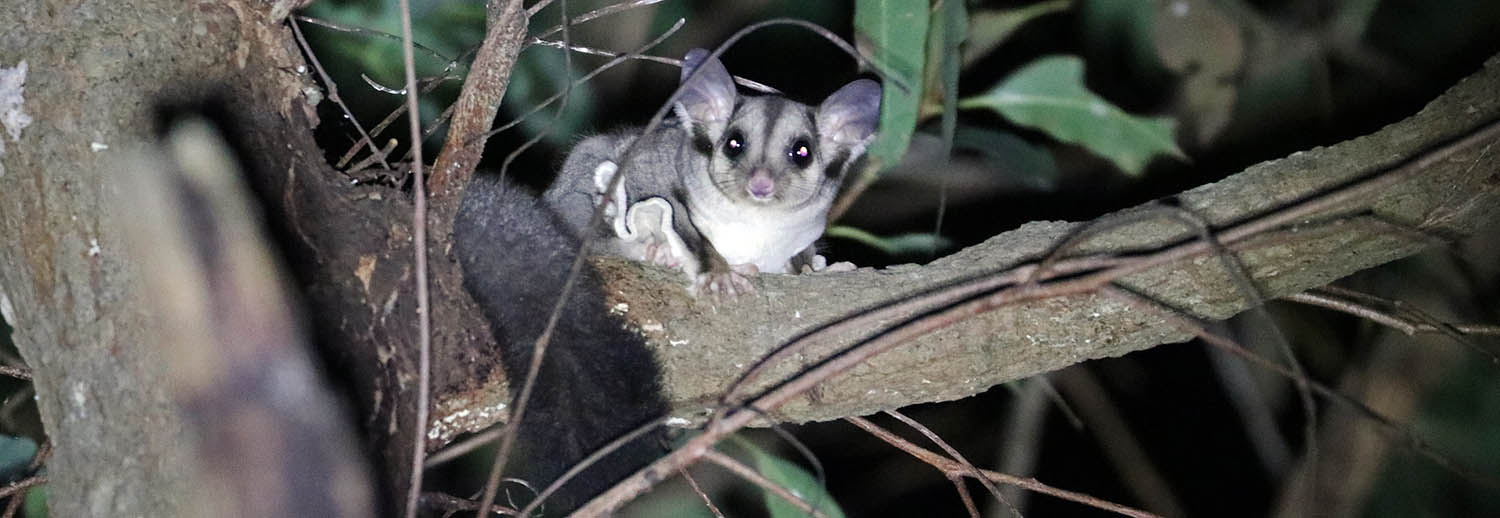 (Coochin Creek, Beerwah, Queensland)
(Coochin Creek, Beerwah, Queensland)Petaurus norfolcensis, 'Squirrel Glider', Similar looking to Sugar Glider, but this species is larger, with larger ears and much bigger fluffy tail. Found in Eucalyptus forests in eastern Australia.
Kangaroos & Wallabies
 (Whiteman Park)
(Whiteman Park)Kangaroos are the largest animals in the world to using hopping as locomotion, or indeed that have ever lived.
Family Potoroidae
The smaller hopping marsupials. Includes many increasingly rare species.
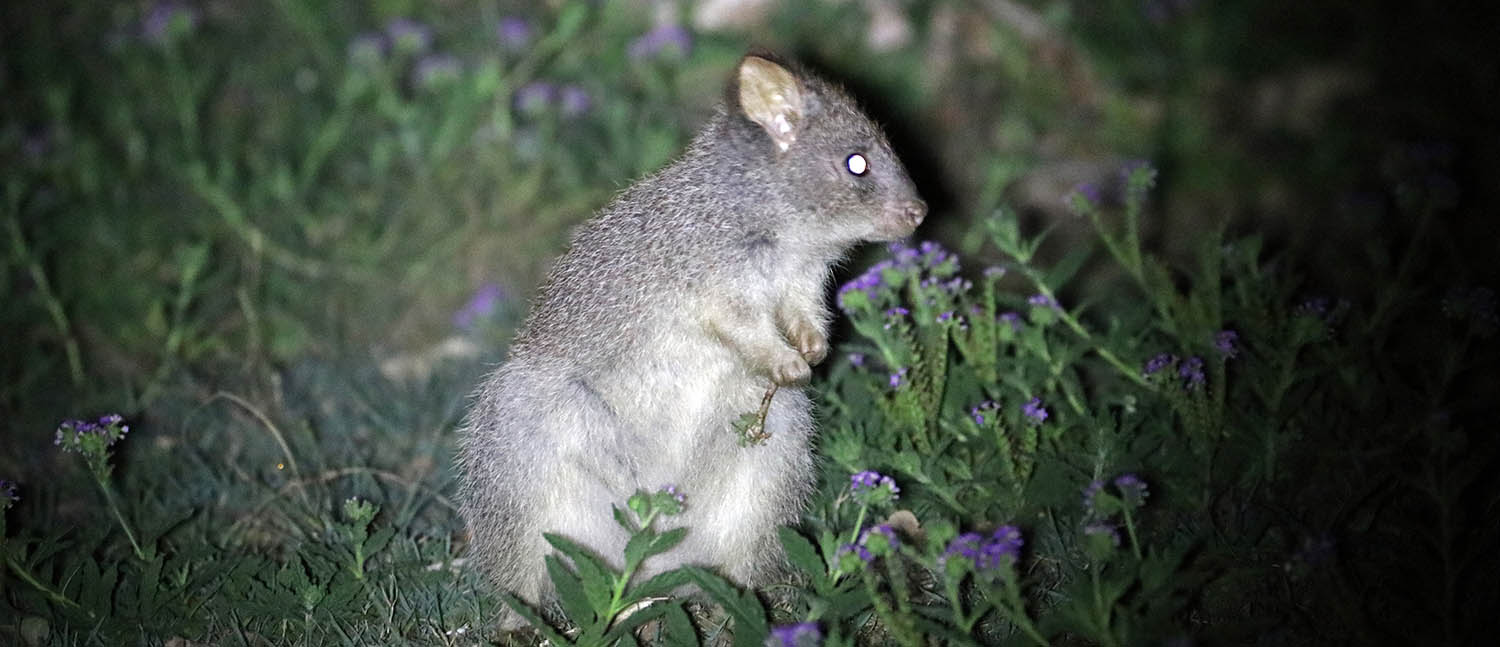 (Crow's Nest National Park, Queensland)
(Crow's Nest National Park, Queensland)Aepyprymnus rufescens, 'Rufous Bettong' 'Rufous Rat Kangaroo'. The largest of all the potoroids, but still a small marsupial. Often stands with kangaroo like stance, but with tiny arms. Usually solitary, but sometimes in loose groups. Found in drier Eucalypt woodlands eastern Australia, from North Queensland south to northern NSW (it was once found down to Murray River). Shy and hard to see, one of the best spots are around the campfire at Undara.
 (Barna Mia, Dryandra)
(Barna Mia, Dryandra)Bettongia penicillata, 'Woylie', 'Brush-tailed Bettong'. Once lived in temperate forest and arid habitats across a large part of Australia, now very rare and restricted to small pockets in south west and south east of continent.
Family Macropodidae
The larger hopping marsupials! Including the classic and well known kangaroos.
Macropus spp.
This genus includes many of the larger and best known kangaroo species.
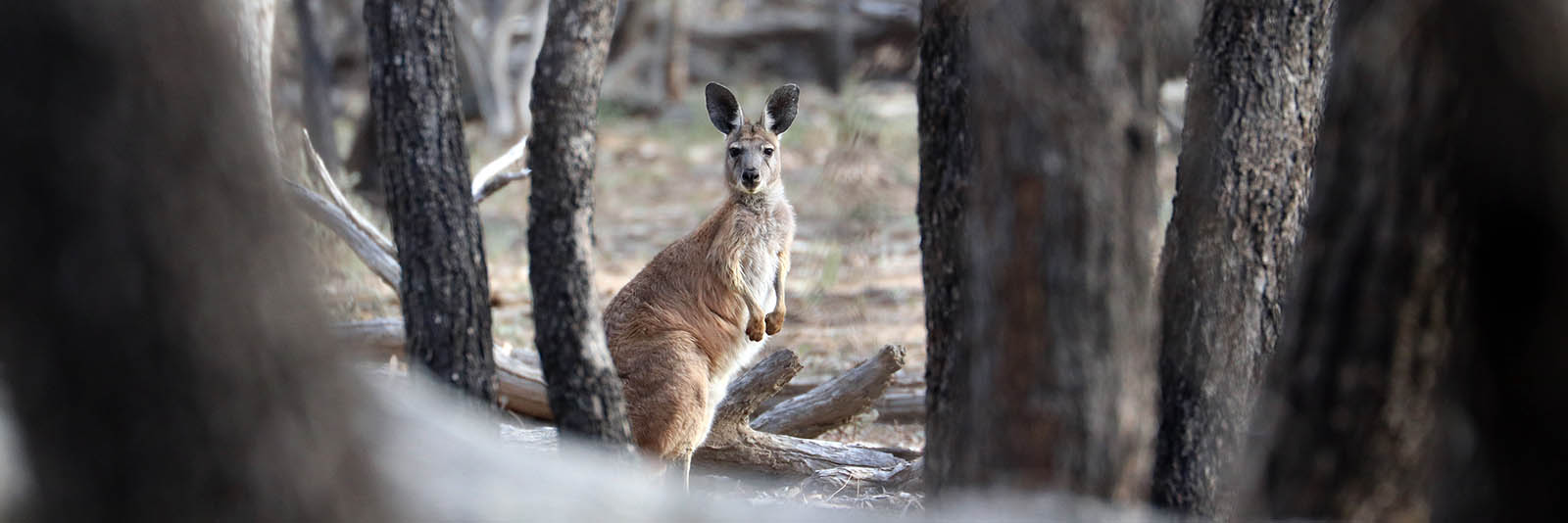 (Grey Lloyd Jones Weir, Queensland)
(Grey Lloyd Jones Weir, Queensland)Macropus giganteus, 'Eastern Grey Kangaroo'. The common large kangaroo in temperate Australia, east of the Great Dividing Range.
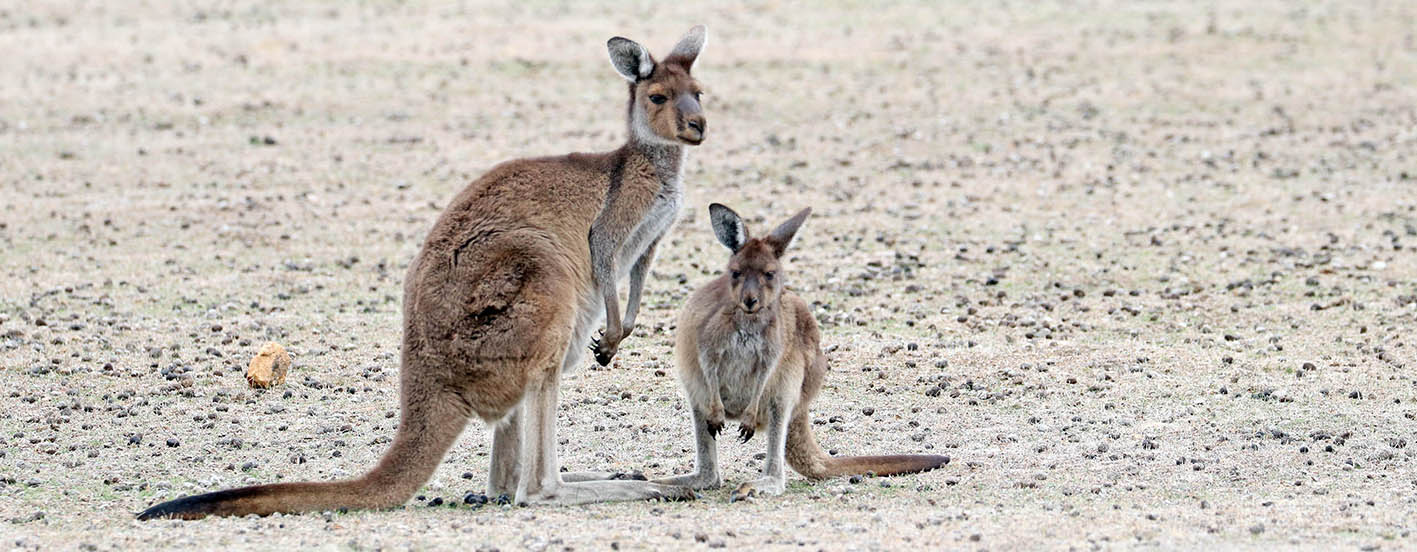 (Dryandra, W.A.)
(Dryandra, W.A.)Macropus fuliginosus, 'Western Grey Kangaroo'. The common large kangaroo in temperate Australia, west from the Great Dividing Range.
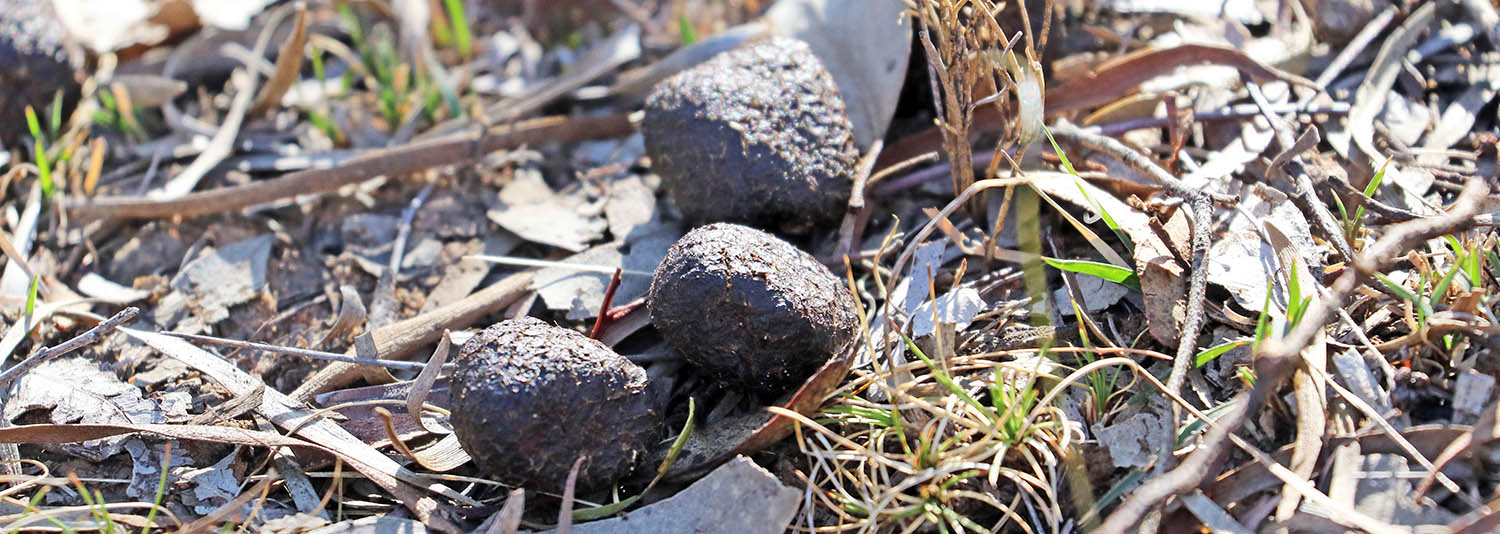 (Dryandra, W.A.)
(Dryandra, W.A.)'Western Grey Kangaroo' scat.
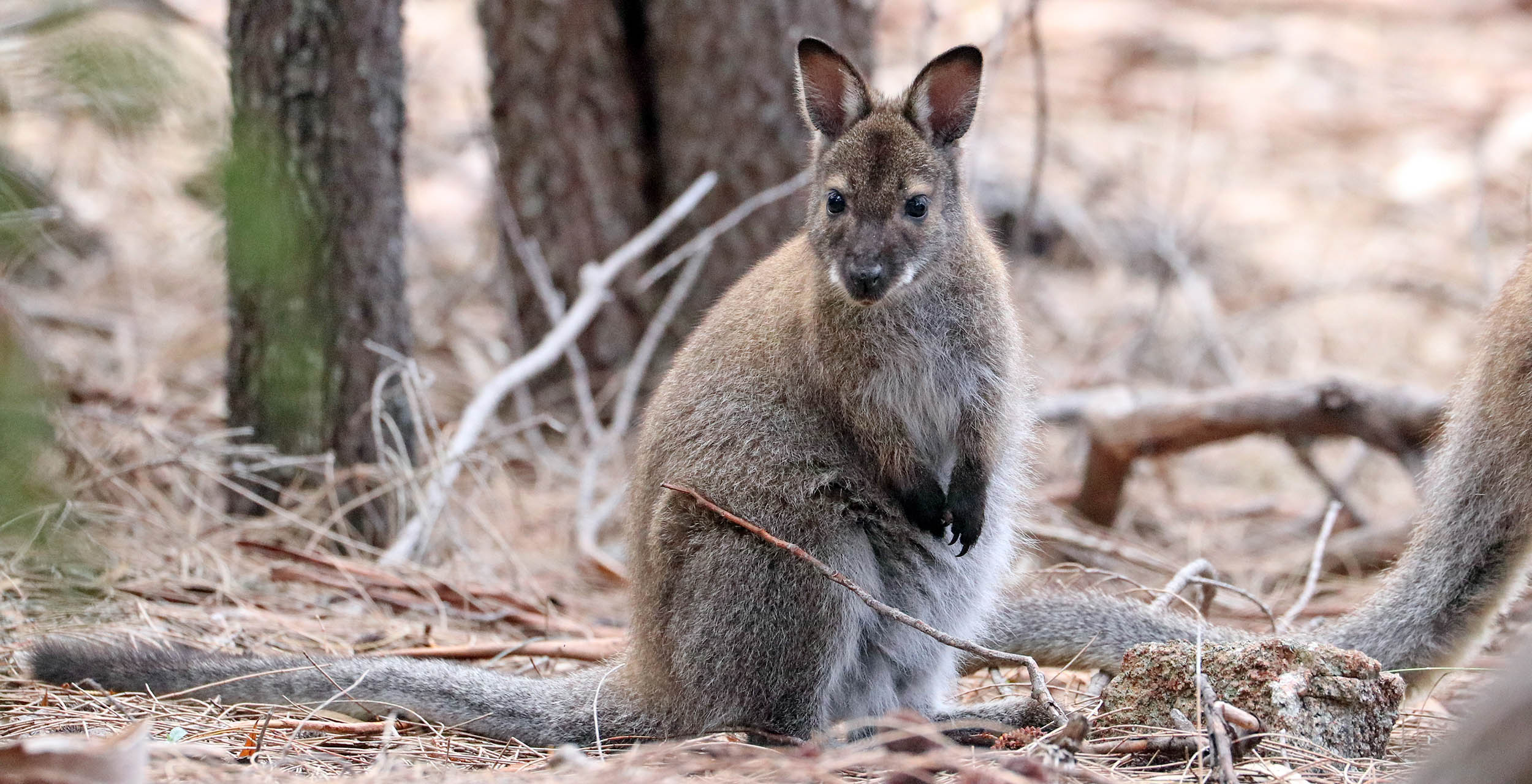 (Wineglass Bay, Tasmania)
(Wineglass Bay, Tasmania)Macropus rufogriseus, 'Bennet's Wallaby'. This is the Tasmanian subspecies of the Red-necked Wallaby'.
Petrogale spp., 'Rock Wallabies'
 (Brush-tailed Rock Wallaby, on Dam wall near Crows Nest National Park, Queensland)
(Brush-tailed Rock Wallaby, on Dam wall near Crows Nest National Park, Queensland)Rock wallabies are a group of smaller macropods that have adapted to live within rocky habitats. Most species are found in tropical woodland habitats, with just a few in arid and temperate regions.
 (Dam wall near Crows Nest National Park, Queensland)
(Dam wall near Crows Nest National Park, Queensland)Petrogale penicillata, 'Brush-tailed Rock Wallaby'. An increasingly rare rock wallaby of south-east Australia.
For a video of a guided walk looking for Brush-tailed Rock Wallabies
Setonix sp.
This genus only contains one species - the cute Quokka!
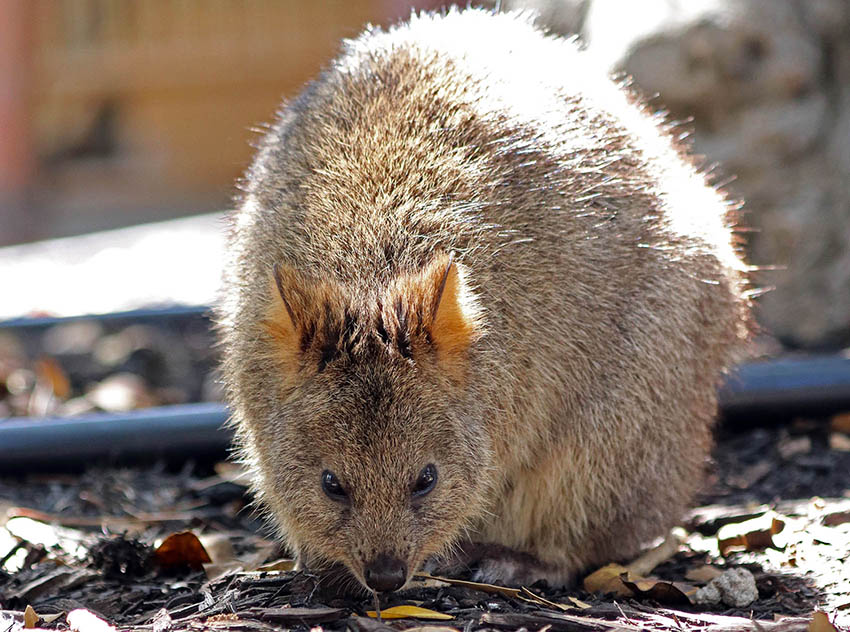 (Rottnest Island, Australia)
(Rottnest Island, Australia)Setonix brachyurus, 'Quokka'. Endemic to the south west of Australia. Most commonly seen on Rottnest island, where they are habituated to people and hang around the restaurants.
Placental Mammals
Order Chiroptera: Bats
Family Pteropodidae: Flying Fox, Fruit bats
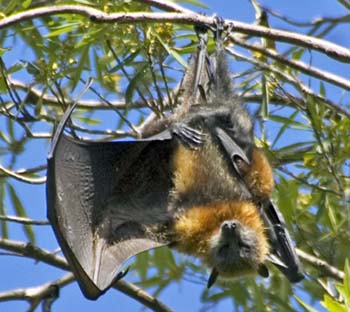 (Sydney Botanical Gardens, Australia)
(Sydney Botanical Gardens, Australia)Pteropus poliocephalus, 'Grey-headed Flying Fox'.